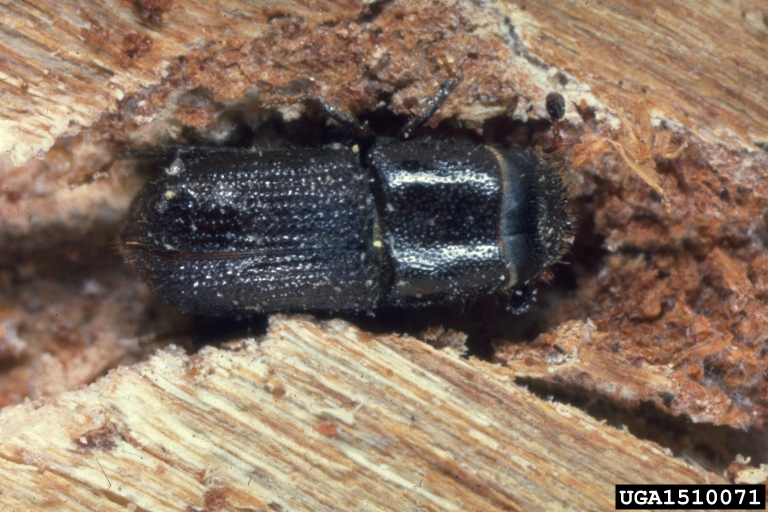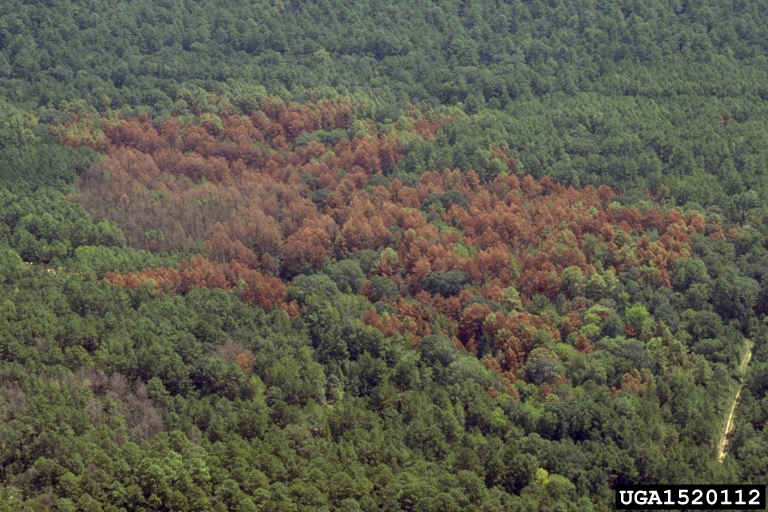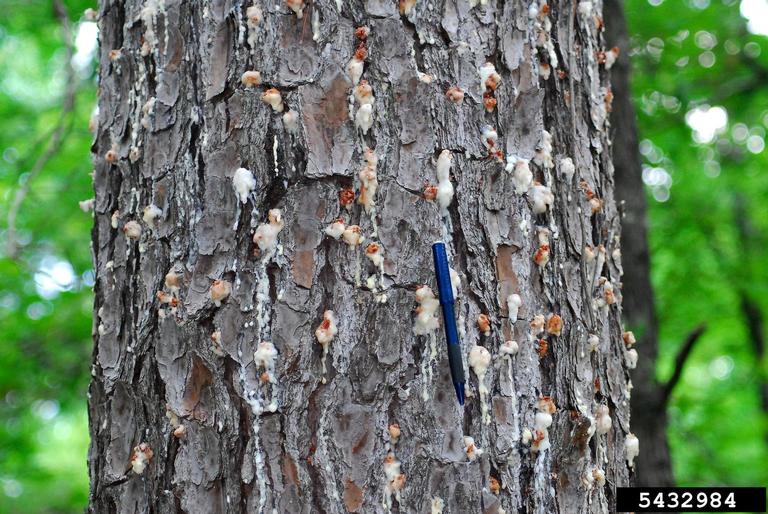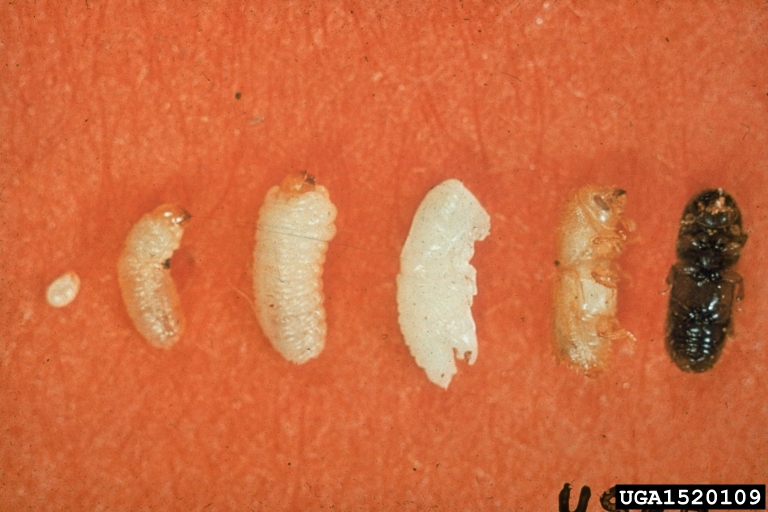Southern Pine Beetle
The southern pine beetle (Dendroctonus frontalis) is the most destructive forest insect in the South. Weakening of trees by flooding, windstorms, and especially drought commonly precede outbreaks.

Courtesy of USDA Forest Service, Bugwood.org
If you are a private landowner in Mississippi and are concerned about Southern Pine Beetles on your property, please contact your Area Forester or view the interactive map below to see if there is any current activity near your property. Very limited funding is available for the Southern Pine Beetle Prevention Program to certain landowners who qualify. For more information on this program and the requirements needed, click below.
Activity Map
The Mississippi Forestry Commission completes two Forest Health flights annually, usually in the spring and fall.
The interactive Private Lands Forest Health Update map shows all of the points where damage was found during these flights. The map also includes damage from wind and the IPS engraver beetle.
Host
Prefer loblolly, shortleaf, Virginia, pond and pitch pine
Identification
The brown to black beetle is about 1/8 inch long. Its hind end is rounded, in contrast to the scooped out posterior of the IPS beetle. Larvae are white with a reddish-brown head and the pupae pure white. Fully-grown larvae and pupae are approximately 1/8 inch in length. Eggs are white and easily visible to the eye.
Signs of Attack

Courtesy USDA Forest Service, Bugwood.org
The first indication of attack is usually yellowing or browning of needles. The trunk will usually reveal white, yellow, or sometimes red-brown pitch tubes, about as large as a wad of gum.

Courtesy Erich G. Vallery, USDA Forest Service, Bugwood.org
Under drought conditions, pitch tubes may be very small or absent, and only reddish-brown boring dust will be present. Removal of the bark will show a distinctive winding “S” shaped gallery pattern.
This pattern is quite different from the “Y” or “H” shaped gallery patterns of the Ips beetle and is a good identification characteristic. In active spots, trees in the center have dark reddish-brown foliage. Foliage will change to light greenish or yellowish-green on the edges of active spots.
Life Cycle

Courtesy of USDA Forest Service, Bugwood.org
The southern pine beetle has a complete metamorphosis consisting of the egg, larval, pupal, and adult stages. The complete life cycle of the attack, which takes from 25 to 40 days to complete, depends on the temperature. The beetle may produce as many as nine generations per year.
Habits
The adult beetles are usually attracted to weakened trees. In epidemics, however, they attack trees that appear to be healthy and vigorous. Initial beetle attacks are in the mid-trunk area and then up and down the length of the tree. The adult beetles bore through the bark and then excavate long winding “S” shaped galleries.

SPB lay eggs in niches along these galleries. The larvae feed in the cambium area until they are grown and then excavate cells in which to pupate near the bark surface. After pupation, the adult beetles chew through the bark and emerge.
Control
Natural enemies, such as diseases, parasites, predators, and weather, help maintain beetle populations at low levels and bring cyclic outbreaks under control.
Integrated pest management may be achieved through any one or all of the following suppression techniques:
- Rapid salvage and utilization of infested trees
- Piling and burning of infested materials
- Chemical control in high-value resources
- Cut-and-leave (May through October)
The user is referred to the Integrated Pest Management Decision Key (IPM-DK) to select the most appropriate strategy. Good forest management is the most effective method of preventing losses from the southern pine beetle.
